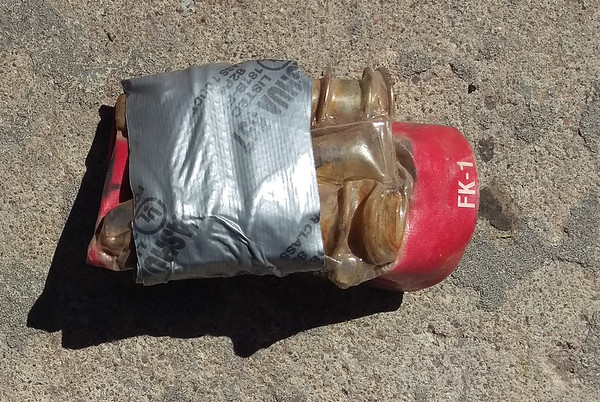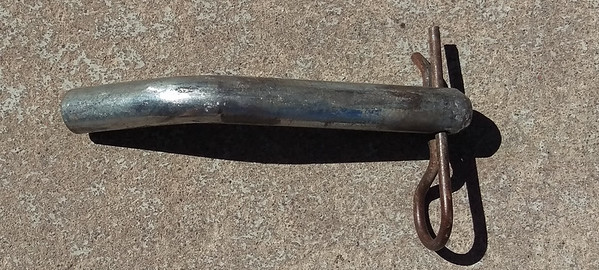
At the start of each season I inspect and review the gear in my recovery kit. For this inspection everything comes out of the box, gets cleaned and inspected. The gear is then re-stowed. Here I am going to share all the gear that is in my kit as well as a few comments. During the inspection process any gear that down not pass will be retired and destroyed.
Shackles are the key method for connecting gear during the rigging for a recovery. With removable pins shackles provide the method for connecting closed system points together. Only screw pin shackles should be used due to their ability to resist failure during side loading. Shackles must be rated with the rating shown as a part of the casting. The bottom row of shackles are rated at 6.5 tonnes and the top row are rated at 4.75 tonnes. Inspection:
- Does the screw pin thread freely in and out?
- Are there distortions such as bends, twists or spreading?
- Are there nicks and gouges?
- Are there any cracks or bad corrosion?

Recovery Straps
I carry 3 recovery or snatch straps and one tree strap. New straps are all labeled and rated. My straps are older and not well labeled and will be replaced over time with straps meeting the current standard. Inspection:
- The straps must be clean for inspection.
- Is all the stitching for the loops intact and in good condition?
- Do the straps have any sections where the fibers are frayed broken or worn through?
- Some straps will have a colored thread down the middle. If this thread is broken in any place the strap has been over stretched.
- Are there any melted fibers?

Winch Extension
I carry a 50′ winch line extension. The extension is is used for multiple rigging scenarios. The winch line extension requires an end to end inspection:
- Are the thimbles in good condition?
- Are there any sections with broken fibers?
- Are there any indications of heat damage or melting (These sections will become stiff)?

Snatch Blocks
I carry 2 snatch blocks to provide more rigging options. Inspection:
- Is there any excessive corrosion?
- Is there any apparent distortion of the plates?
- Do the rollers run free?
- Are the blocks free of ANY burs of rough areas that could damage synthetic rope or straps?
- Are the circlips in good condition and well seated?
- Does the pulley need lub?

Grade 8 transit chain
I carry a 25 foot section of grade 8 transit chain. The chain is fitted with grab hooks on each end. I use this chain mostly for rigging hi-lift for winching. Inspection is performed end-to-end:
- Are both hooks in good condition and not showing any signs of distortion?
- Are the pins in good condition?
- Are the cotter pins installed and in good condition? I had to fix a problem here. The cotter pins were not fully bent over and a snag hazard, an easy fix.

Hi-Lift accessories
I carry a number of accessories for my Hi-Lift jack.
Lift-Mate: Used to lift by wheel spokes. Inspection:
- Is there any excessive corrosion?
- In the stitching in good condition?
- Are there broken or worn fibers?
Winch Kit: The winch kit allows for easy rigging of the Hi-Lift as a winch. Inspection:
- Chain inspected following above criteria.
- Are the bolts in good condition?
- Is there any excessive corrosion?
Base Plate: Provides a larger base for the jack. Inspection:
- Is the plastic cracked?
- Is there a recovery rope attached? Used to pull the base out if it get buried during a recovery.
JackMate: This attachment is a great addition to expand the function of the jack. Inspection:
- Is there any distortion of the JackMate?
- Is there excessive corrosion?

Hi-Lift FixIt kit
This kit contains all that is needed to rebuild a Hi-Lift jack. Inspection ensures that all the parts are still in the kit:
- 2 climbing pins
- 2 climbing pin springs
- 1 safety shear pin (NEVER replace this with a standard bolt)
- lubrication tube
- 2 cross pins

Grade 8 1/2″ Bolt
The Grade 8 1/2 inch bolt is used in a trailer hitch receiver tube to connect straps. Inspection:
- Is the bolt bent or deformed?
- Can the nut be threaded on and off?

Transit Cluster
The Transit Cluster is used to connect to vehicles without recovery points. There are usually holes in the frame that one of the keys will fit. NOTE: This is to be used ONLY for static recoveries. Inspection:
- Are any of the keys or links deformed?
- Is there excessive corrosion?

Splice Kit
The Splice Kit includes the items needed to splice synthetic winch line. The two key items are the Fid and the Thread.

Jumper Cables
I carry a long set of jumper cables. I can usually reach the battery from the rear of the stalled rig. Inspection:
- Are the Clips in good condition?
- Are the cable attachments in good condition?
- Is the insulation intact and not cracked?

Tire Plug Kit
The tire plug kit is used for fixing tire punctures. Don’t leave home without one. I have used this on the trail a number of times. Get a good kit. Inspection:
- Are there enough plugs and are they in good condition?
- Is the reamer in good condition?
- Is the plug tool in good condition?
- Is there lube in kit? Lube really help with repair.
- My kit includes stem repair items as well.

Hitch Pin
I pull a trailer so I always carry a spare hitch pin. This is also used for some recovery scenarios. Inspection:
- Is the pin bent or distorted?
- Is there excessive corrosion?
I know this is not really a recovery tool, however, my sewing awl has been used more than once to repair gear including my roof-top-tent.
I carry two 5 lb hammers, dead blow and a regular hammer. Much better that a rock when you need them.
These items are supplemented by what I carry on my trailer.
Stowed in my recovery are tools that don’t fit in the toolbox: Torque wrench, circlip pliers, breaker bar, large monkey wrench, hitch ball wrench, and the spanner for adjusting my front shocks.
This is the only repair manual that I carry. Suspension seems to be one of the common failure points so it is nice to have all the torque setting along.
Look this stuff up and you will be amazed at what you can fix with it.
I carry 2 extra belts. They were taken off at service intervals but still have useful life left. Replacing a failed belt is an EASY repair to get off the trail.
The Half Axle and Tie Rod ends are two common failures on the FJ Cruiser. Having these parts along could make a LARGE problem a lot smaller.
The Duct Tape and Bailing wire of today. I carry Gorilla Tape along with small and large tie wraps. The 1/2″ tie wraps can be used for LOTS of repairs. I had the bolts for my remote shock reservoir fall off during a Death Valley trip. Two of these 1/2″ Tie wraps was a fix that lasted for months. (It never failed I just finally got around the the permanent fix)

Strap Stowage
I use bags for all me gear. For the straps it keeps them from getting worn and it also makes it easy to pull the gear out for a recovery.
Add my ComeUp winch, Hi-Lift Jack, and Pull-Pal to the mix and I am ready to get unstuck.










